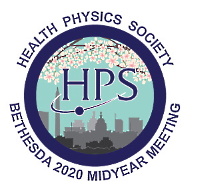TPM-B
Instrumentation
Room: Grand Ballroom A14:00 - 14:45 |
| Chair(s): Carolyn MacKenzie, Frazier Bronson
|
|
TPM-B.1 14:00 Detector Characterization for Neutron Flux Mapping of the Maryland University Training Reactor. Johnson Amber S, University of Maryland, College Park; Gilde Luke T*, University of Maryland, College Park; Case Edward Q, University of Maryland, College Park; Delawie Frederick D, University of Maryland, College Park; Hand Steven T, University of Maryland, College Park; Jacobson Alan D, University of Maryland, College Park; Muldoon Ryan M, University of Maryland, College Park; Nuquist Clay, University of Maryland, College Park; Koeth Timothy W, University of Maryland, College Park ajohns37@umd.edu
The University of Maryland (UMD) Radiation Facilities is embarking on a full core neutronics map of the 250kW TRIGA research reactor. This project includes characterization of the 5 experimental stations: two beam ports, through tube, graphite moderated thermal column, and in-core pneumatic (rabbit) irradiation facility. This measurement campaign will be performed in collaboration with the UMD Radiation Safety Office’s gamma ray spectroscopists. To assist with the large measurement throughput, the UMD Radiation Facilities has invested in Mirion’s Laboratory Sourceless Calibration Software (LabSOCS) and the characterization of a high-resolution high purity germanium detector. Our first step in this process has been to characterize the rabbit system, the location of highest flux, in order to confirm our experimental and analytical techniques. Flux measurements are made with a variety of activation foils and best practices are followed. We will report on the use of LabSOCS and its performance compared to canonical multi-nuclide calibration techniques.
|
TPM-B.2 14:15 Applications using Continuous Sequential Repeating Quantitative Gamma Spectral Acquisition and Analysis. Bronson Frazier*, Mirion Technologies - Canberra; Bronson Frazier, Mirion Technologies - Canberra fbronson@mirion.com
Many nuclear facilities have on-line instruments that continuously record the count rate, or dose rate. These instruments are quite helpful to record the presence or absence of radiation changes. However, if after a significant change in the instrument reading the actual radionuclides involved and their activities must be determined, this requires extracting a representative sample, and after some delay, a laboratory analysis. The Data Analyst [DA] is a device that connects to CZT, Scintillation or HPGe gamma detectors and their respective Multi Channel Analyzers. The DA is an autonomous device that upon startup automatically starts acquiring a repeating sequence of gamma spectra for a user-defined time. After the time expires, the next spectra is started with no lost time, and the previous spectrum is analyzed and the result made available. Alarms can be set if the activity is above the user’s threshold. Acquisitions can run continuously or be triggered by an external signal. Examples:
• Primary coolant at Nuclear Power Plant; These used a collimated CZT detector aimed at a pipe. These have been performed at 4 different reactors.
• Primary coolant at Nuclear Power Plant: Under construction is an HPGe system that will measure an extracted primary coolant sample.
• Stack Gas Monitor: Three units with a shielded HPGe detector and a large Marinelli gas beaker at various reactor sites in Europe, USA, and Australia.
• Fuel Rod Scanner: A heavily collimated HPGe detector views a 0.5mm wide section of the fuel rod. The triggered mode of the DA is used to acquire a single spectrum each segment of the fuel rod.
• Pipe Monitor: A collimated NaI unit at a waste processing facility. If key nuclide activities are too high, the material is diverted.
• Robotic measurements of ground and floor activity: The robot autonomously drives a predetermined pathway. Nuclide analyses are performed every 3 seconds from each of the two NaI detectors.
|
TPM-B.3 14:30 Imaging special nuclear material by luminescence dosimetry. OMara Ryan P*, North Carolina State University; Hayes Robert B, North Carolina State University rpomara@ncsu.edu
In the presence of continuously distributed radiation detectors, it becomes possible to effectively image radiation sources. Recent work in solid state dosimetry has demonstrated the ability to measure radiation doses to ubiquitous insulating materials, thereby turning the world into a distributed network of radiation detectors. In this work, a 4.5 kg sphere of weapons grade plutonium was subjected to passive imaging of using commercial optically stimulated luminescence dosimeters (OSLDs). It was proposed that geometric attenuation would result in a unique dose distribution that can be used to determine the location and radius of the imaged source material. This analysis will assess the capabilities of optically stimulated dosimetry to determine the three-dimensional position and radius of source material. These results will be considered with respect to the potential applicability of solid-state dosimetry in nuclear nonproliferation, by allowing inspectors to determine the historic positions special nuclear material.
|
 2020 Health Physics Society Midyear Meeting & Exhibition
2020 Health Physics Society Midyear Meeting & Exhibition